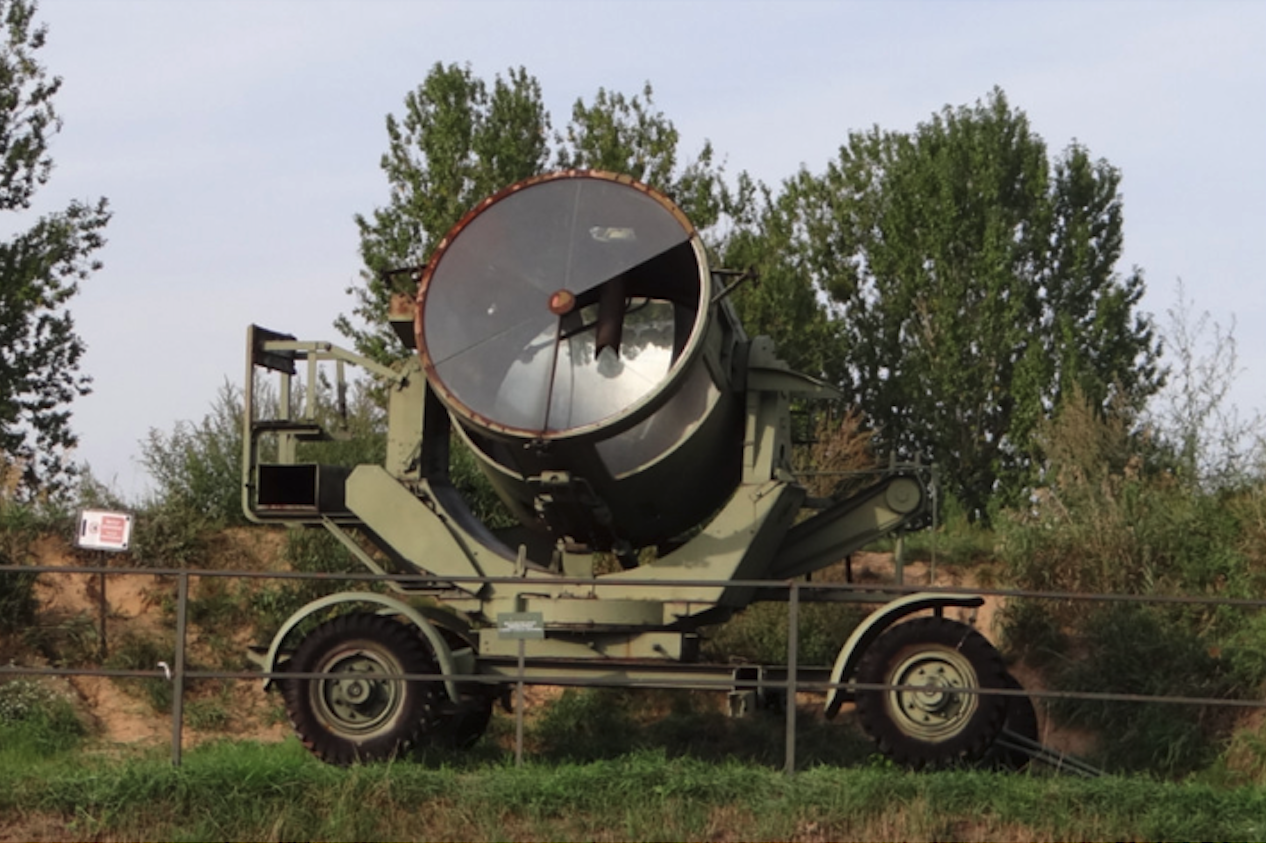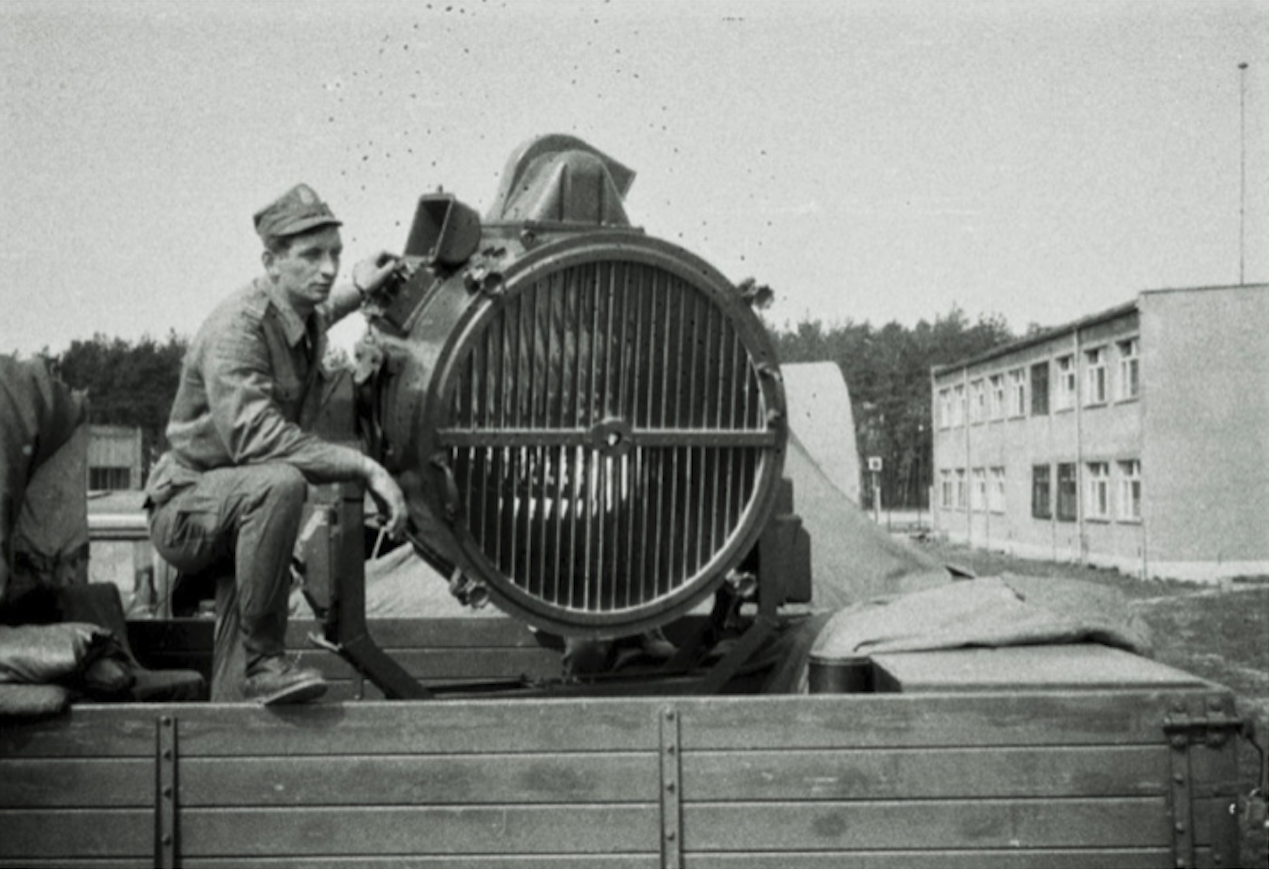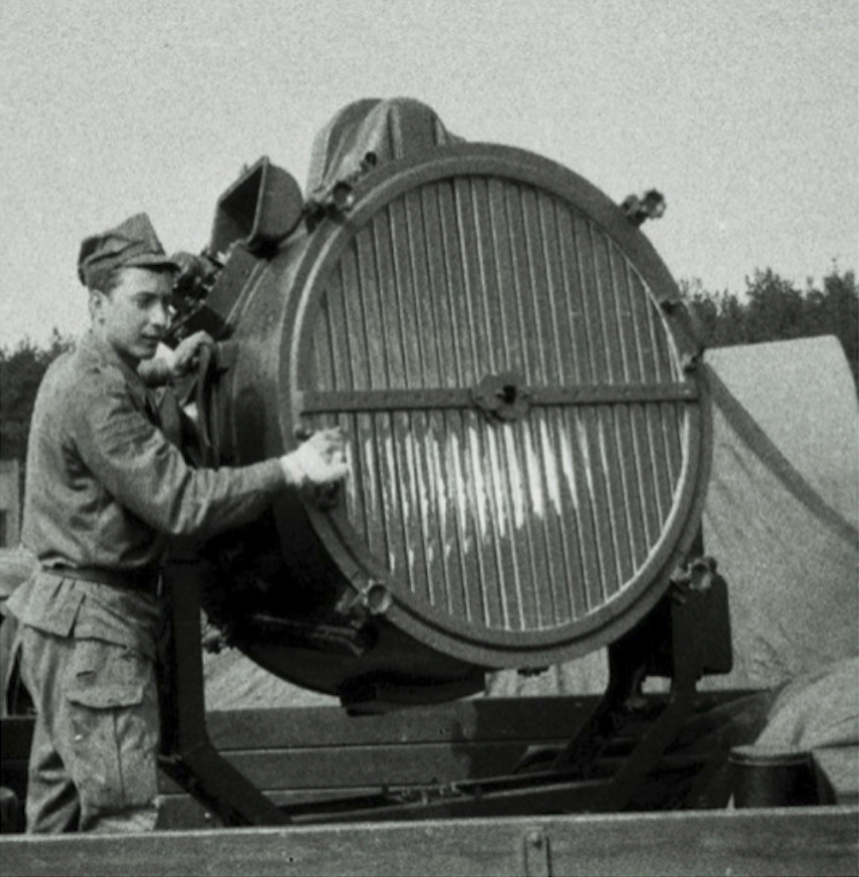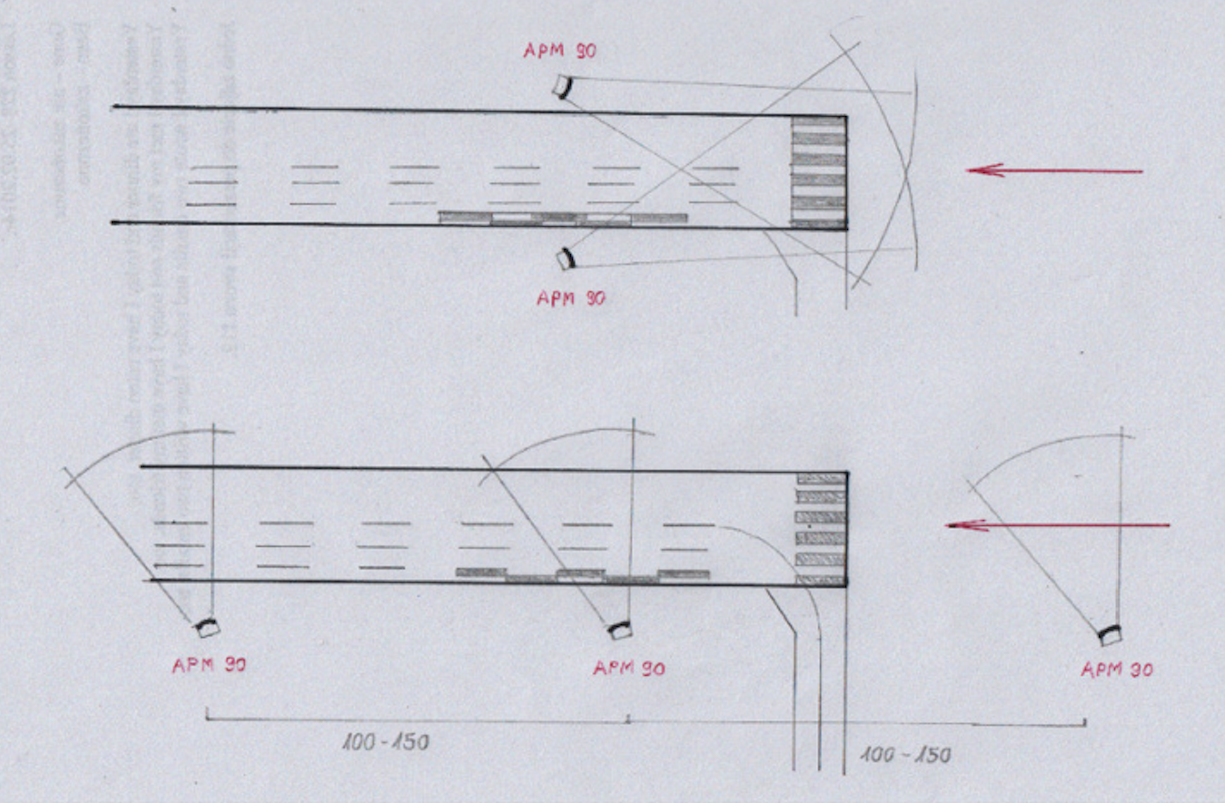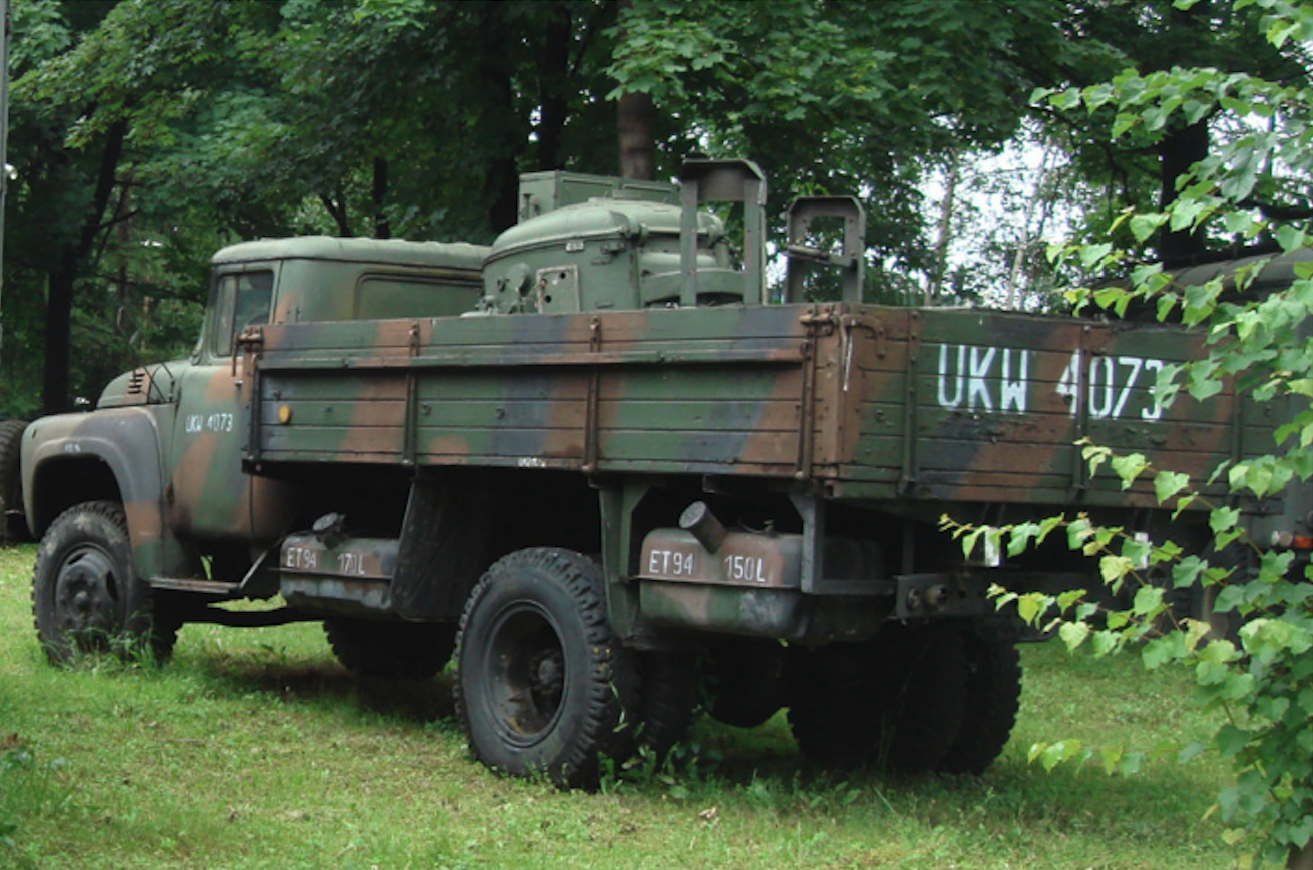Kraków 2014-12-15
Lighting on the take-off area at military airfields in the 1970s.
In the previous chapters, we mentioned several times about the important role of airport lighting, and above all the landing area. Since the military doctrine of the Muscovite empire provided for mobility as the basic axiom of action, the lighting of the landing field should also be mobile, or at least transportable. In Poland, at the airfield of the air regiment in the 1960s, permanent RWY and DK edge lighting was introduced, and the main PPS received lighting in the form of a street lamp. This allowed for much more efficient flights at night. However, all other aviation lighting components were transportable and had to be developed. At alternate airfields and DOL (airport road sections) all elements of aviation lighting had to be deployed for the duration of the flights.
The landing field lighting was provided by Kompania Ubezpieczenia Lotów (KUL or UL for short). The Flight Insurance Company usually cooperated with the Communications Company and together they formed a Battalion. At times it was expanded as far as the Flight Insurance Division. This was the case, for example, in the training and combat regiments, where the most flights were performed. Flight Insurance Company handled; radio beacons, radio direction finders, RSP (PAR) systems, lighting systems (Łucz, APM, KNS), and in the 80s also permanent AVIA-W radar stations installed at (or near) regiment military airfields. In short, Kompania Ubezpieczenia Lotów operated equipment securing take-offs and landings of aircraft (planes and helicopters).
It should be remembered that almost all radar systems were operated by the Radio Technical Forces, which cooperated operationally with air regiments from the Corps level. It was similar with the Missile Forces and Artillery, which also had their own radar equipment.
Illumination with spotlights.
The basis of the lighting was, of course, the reflector. Its origins were lamps used on lighthouses. Portable headlights began to be developed for a variety of uses. The real heyday of high-power floodlights took place during the First and Second World Wars. Both wars started by the germanic plague. At that time, anti-aircraft searchlights were created.
Description of the photo: This is an anti-aircraft searchlight produced in 1944, in the UK. This copy is in the Polish Army Museum in Warsaw. The experience gained during the war was used to develop the aviation searchlights of the Cold War period.
APM-90 reflector.
A typical and popular airport searchlight was the CCCP APM-90 searchlight.
APM-90 is an airport navigation searchlight with a diameter of 90 cm. It was developed around 1953, when high-speed turbojet aircraft were introduced to aviation on a massive scale. The APM-90 replaced the 60 cm diameter searchlights developed in 1936, and the 200 cm anti-aircraft-intercept searchlights, which were difficult to use. APM-90 were initially mounted on ZIS-150 cars. In Czechoslovakia, the APM-90 was mounted on Praga V3S cars. The next vehicles are ZIL-164, ZIL-130 and ZIL-131. In the ZiŁ-164 car, electricity for the headlight was supplied by the PR-125 DC generator located under the car’s chassis. The generator was as large as the internal combustion engine that powered the vehicle. The generator was driven by the car’s engine after disconnecting it from the drive system. The engine was running in 5th gear.
The APM-90 was mounted on a truck or as permanent installations. It was designed to illuminate the runway, guide aircraft optically to the airport area or mark a point in the field in conditions of limited visibility and at night. The ZiŁ-130 car with the modernized version of the APM-90M headlight became the standard. The headlight was also mounted on ZiŁ-131 cars and Polish STAR-66 and STAR-29 cars.
The APM-90 spotlight has an arc-incandescent lamp, i.e. it can shine as an arc or incandescent lamp. Usually it shone as an arc with burning electrodes, controlled automatically or manually. This automaton also automatically maintained the crater of the positive electrode in the focus of the reflective mirror of the reflector. The electrodes could be moved manually in the event of a machine failure. The arc lamp was equipped with 3 electrodes: positive electrode 550 mm long and 16 mm in diameter, negative electrode 330 mm long and 11 mm in diameter, and ignition electrode 56 mm long. The ends of the used negative electrodes could be used as the ignition electrode. The burning time of one set of electrodes was 1 hour and 15 minutes. The PŻ-19 incandescent lamp was used very rarely. It could only work in a vertical position, therefore it was forbidden to swing the reflector vertically. The working time of the incandescent lamp was 100 hours. As a standard, the floodlight is powered by a PR-125 power generator, with a voltage of 110 V and a power of 12-17.5 kW. It can be connected to an external network. The reflector is movable in azimuth 360 degrees in elevation 30-85 degrees. It is visible to aircraft crews from a distance of up to 120 km. During the approach to landing at night, at the altitude of 1,000 m – 4,000 m, it should be visible by the crews from a distance of at least 25 km. The diameter of the luminous flux is 0.90 m. The weight of the whole assembly is 8,525 kg. Often a filter composed of "stripes" was put on the reflector, which gave diffused light, well illuminating the RWY.
When did the cars with APM go to the field of ascents? Three cars with APM-90 were leaving for night flights. They were set sideways to the direction in which the reflector was supposed to shine. On the ZiŁ-164 cars, the tarpaulin was rolled up on the side and the frame with the tarpaulin was slightly raised. Thus, the reflector and the operator were protected from wind and rain. The same was done on STAR-29 cars. It was worse on the ZiŁ-130 and ZiŁ-131 cars, because they did not have tarpaulins. But the cabs were tighter and, compared to the ZiŁ-164, they were heated.
In addition to night flights, the APM went on the so-called duty pair, when the regiment was on combat duty. At that time, two MiG-21 aircraft, fully fueled and armed with crews ready to take off at any time, were on duty for several days and nights. Pilots changed, but machines didn’t. In the event of an alarm, the duty car drove the pilots from the Pilot’s House to the planes. Engines started and take off. Such duty of the APM lasted several days and nights, although the APM itself was needed mainly at night.APMs were also on duty at alternate airports. When the home regiment was practicing, but also as a security for other regiments’ planes. For example, the Kąkolewo Airport performed such functions for the 11th PLM Strachowice Airport, when it flew to shoot at the sea training ground and for the 32nd PLRT in Sochaczew, when this regiment flew for reconnaissance over the Baltic Sea. Usually two APMs and two KNSs were sent. And according to a reliable source, there were cases of emergency landings of these machines in Kąkolewo.
APMs also left to shine during the day with poor visibility to the so-called gate. There was no filter on the reflector and the beam of light was sharp. The searchlights did not shine on the RWY, but at the right angle in the direction of the landing planes. They were placed on both sides of the runway at a distance of about 200 m beyond the RWY threshold, at the point of touchdown.
Photo Description: In the upper picture, two APM-90s lined up at the gate when there was haze. APM-90s stand at the aircraft’s touchdown site, as do PAPI lights now. In the lower picture are three APM-90s lined up for a night landing. The middle APM-90 stands at the touchdown area of the planes.
In the Moscow state, four APM-90s were sent for night landings. One of the middle ones was aimed at the touchdown spot. This does not mean that there were higher standards in the CCCP. It’s just low tech. The equipment often broke down. In the 1970s, about 15% of conscripts were illiterate.
Written by Karol Placha Hetman

